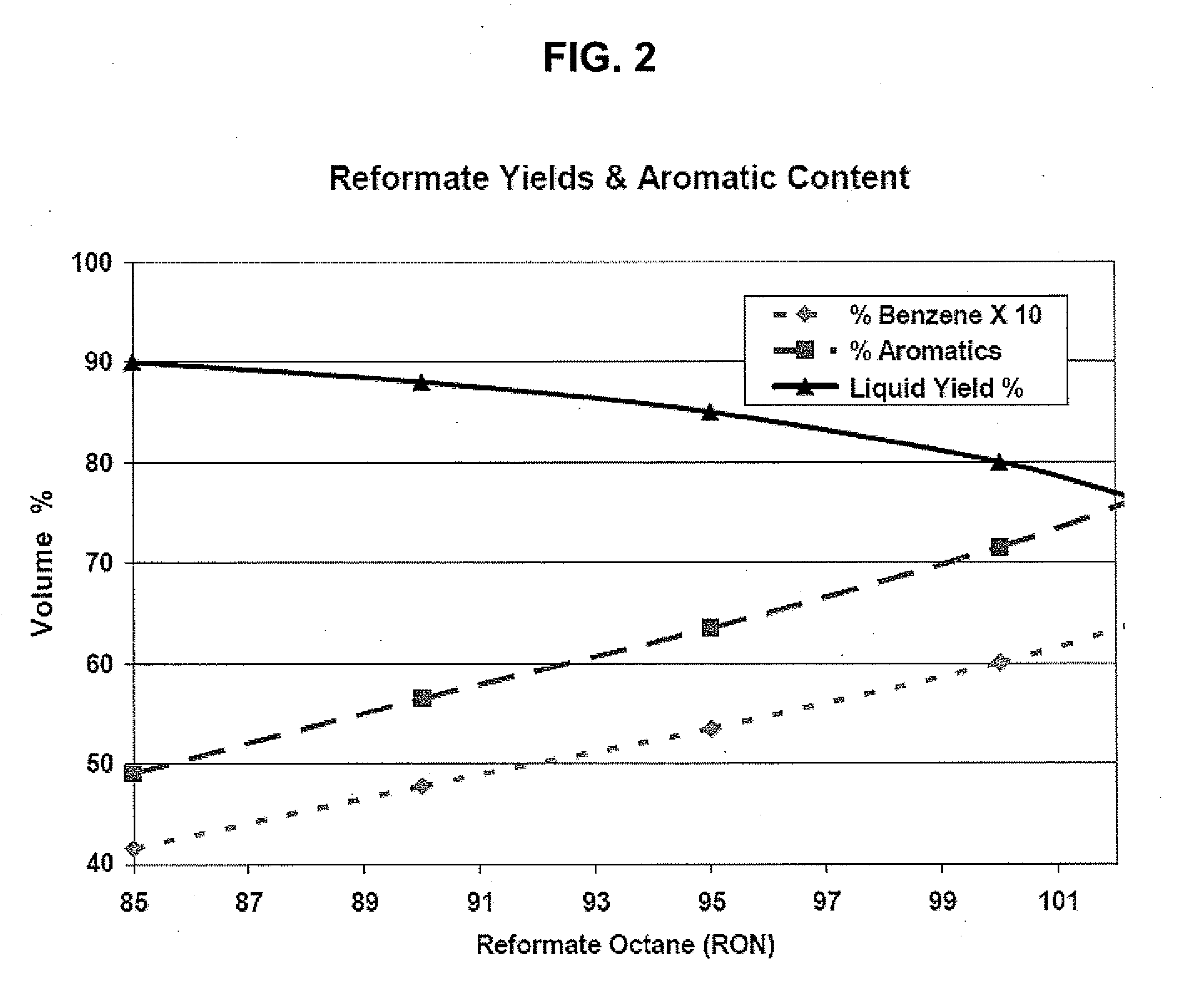Process Development By Parallel Operation Of Paraffin Isomerization Unit With Reformer
a technology of paraffin isomerization unit and reformer, which is applied in the field of process for refining naphtha, can solve the problems of reducing aromatics level, changing gasoline specifications, and creating octane gaps in the gasoline pool
- Summary
- Abstract
- Description
- Claims
- Application Information
AI Technical Summary
Benefits of technology
Problems solved by technology
Method used
Image
Examples
example # 1
Example #1
Refining Naphtha without Second Isomerization Unit
[0034]The following example represents a method practiced in accordance with those known in the prior art. 100 kg of heavy naphtha, of which 60 wt % were paraffins, 27.5 wt % were naphthenes, and 12.5 wt % were aromatics, was sent to a reformer under typical reforming conditions. The resulting reformate included 20.4 kg non-aromatics and 47.6 kg aromatics, thereby yielding a total liquid yield of 68 kg (or 68 weight % of the original feed) and a research octane number (“RON”) of about 100. A summary of the results for Example #1 are shown in Table IV below:
TABLE IVData for Example #1 (Prior Art)Weight(kg)Weight %Feedstock(Heavy Naphtha)Paraffins6060.0%Naphthenes27.527.5%Aromatics12.512.5%Total100.0 100%Reformate(C5+ yield)Non-aromatics20.4 30%Aromatics47.6 70%Total68.0 68%
example # 2
Example #2
Illustrative Embodiment of the Present Invention
[0035]The following is an example practiced in accordance with an embodiment of the present invention. A second sample of 100 kg of heavy naphtha, which was identical in composition as the heavy naphtha used in Example #1, was used as a feedstream. However, prior to sending the heavy naphtha to the reformer, approximately 40 kg of the paraffins (about 67%) were extracted from the heavy naphtha and sent to an isomerization unit. This left a 60 kg feedstream for the reformer. In this case, the reformer (because of the lower paraffin content) was operated at more mild conditions as compared to the reformer in Example #1 (approximately 10° C. to 20° C.), without reducing liquid yield. The resulting reformate included 13.4 kg non-aromatics and 40.6 kg aromatics; thereby yielding a total liquid yield of about 54 kg, which was about 90 weight % of the reformer feed. Furthermore, the second isomerization unit produced a total liquid ...
PUM
 Login to View More
Login to View More Abstract
Description
Claims
Application Information
 Login to View More
Login to View More - R&D
- Intellectual Property
- Life Sciences
- Materials
- Tech Scout
- Unparalleled Data Quality
- Higher Quality Content
- 60% Fewer Hallucinations
Browse by: Latest US Patents, China's latest patents, Technical Efficacy Thesaurus, Application Domain, Technology Topic, Popular Technical Reports.
© 2025 PatSnap. All rights reserved.Legal|Privacy policy|Modern Slavery Act Transparency Statement|Sitemap|About US| Contact US: help@patsnap.com



